he/him - Archaeology Major casual apollo enjoyer since 2015
Last active 4 hours ago
Don't wanna be here? Send us removal request.
Text

I wanted to share some of the Hellenistic ceramic shards I found this week during an excavation..!
#ancient greece#ancient greek mythology#ancient history#ancient rome#greek history#archaeology#archaeologist#hellenism#hellenistic
3 notes
·
View notes
Text
(Not so) small photo dump from my trip to Aphrodisias.
*Expect an info-dump very soon, as I love this ancient city and I've a lot to say.
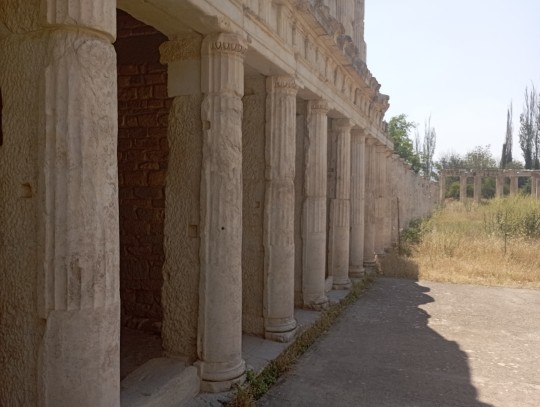
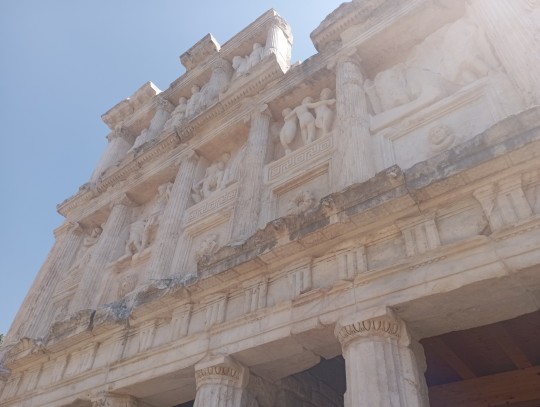
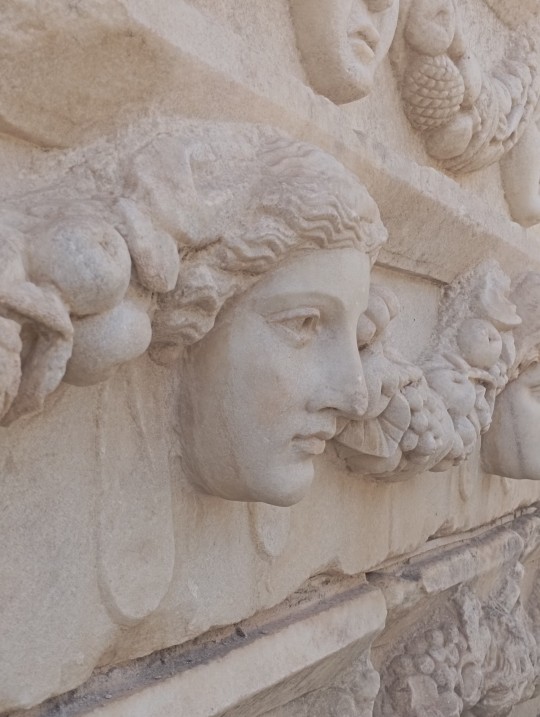
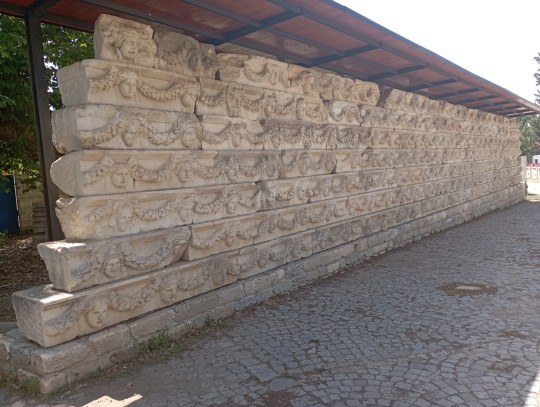

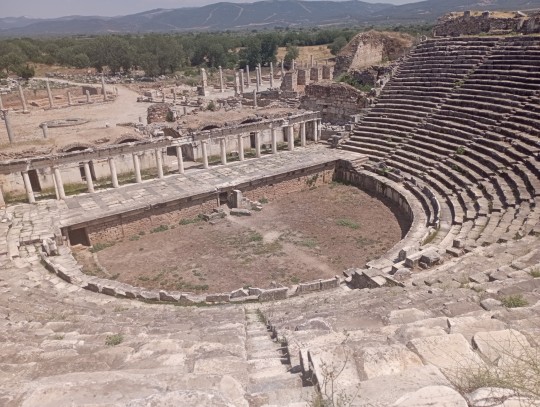

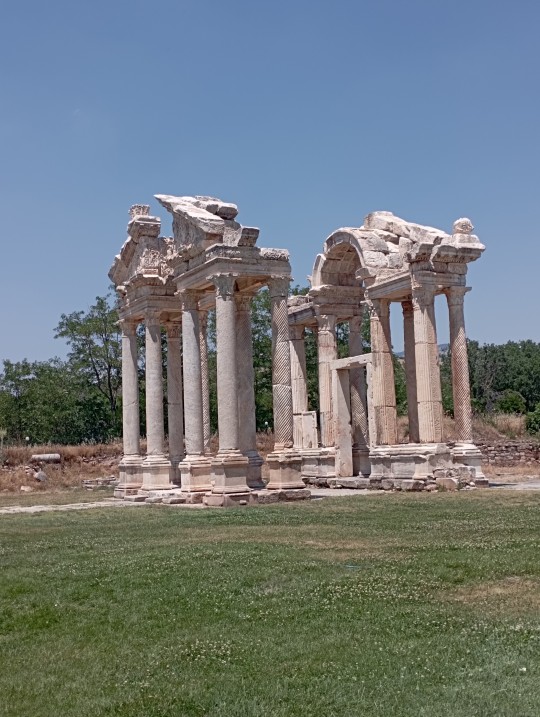
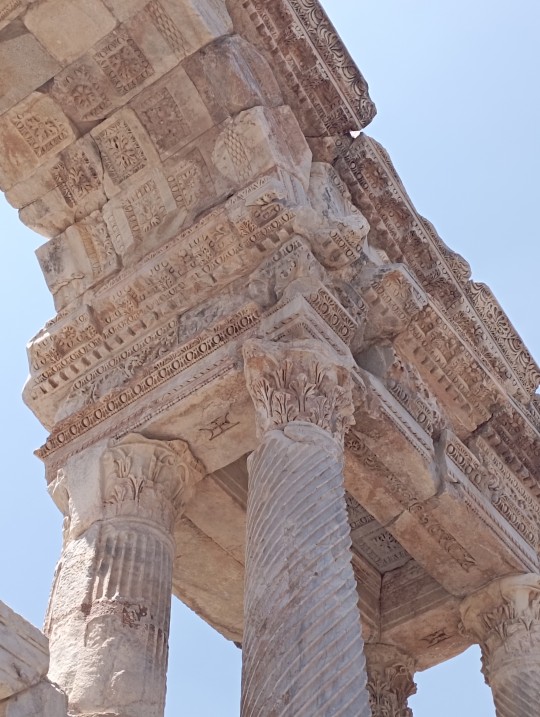

~*~
#ancient greece#ancient greek mythology#ancient history#ancient rome#ancient civilizations#greek history#hellenism#hellenic polytheism#Spotify
13 notes
·
View notes
Text
Spectacular, give me fourteen of these right now.
I'm going through the worst artistic block of my life, in two weeks I was only able to draw an Apollo with cute clothes 😭😭

153 notes
·
View notes
Text

Can't express how stress free being open minded is.
Some lesbians use he/him? Oh cool.
Some people have people inside their head and sometimes it's fictional chars? Sick your brains like a pirate ship they're all working to run.
Some people like being treated like a pet dog? Bark bark bro.
Being fat isn't unhealthy but a perfectly normal type of body to have? Kinda beautiful how different we can all be.
Something doesn't make any fucking sense? Cool an opportunity to learn. And even if I can't figure it out it's cool we still have mysteries today.
131K notes
·
View notes
Text
I might paint one or two of my favorite Apollo statues for pride month....
#ancient greece#ancient greek mythology#gay#mlm yearning#ancient rome#ancient history#pride month#lgbt pride#apollo#apollo greek mythology#i am normal about his hips#why is he so hot
6 notes
·
View notes
Text
Louder for the people in the back...
I truly believe that if you’re going to engage with Greek mythology then you have to put the moral purity aside. None of the characters are going to behave according to our modern sense of morality or ethics. So you either have to get over it OR you have to be willing to dive deeper into the narrative and research the context. Instead of saying “Zeus is clearly a predator” ask yourself WHY are there so many stories about Zeus having babies with mortal women? What’s the significance? Dive deeper into the story and realize the location is ALWAYS mentioned and focused on. See that the child that was conceived typically goes on to do world changing things such as founding a new kingdom…a kingdom that’s usually related to the location that the narrative kept focusing on….huh I wonder why? Perhaps maybe these stories are not about how Zeus likes to get his dick wet (forgive my bluntness Big Poppa! 🙏🏻) but about kingdoms and royalty wanting to link their beginnings to the King of Kings himself??? Maybe????? Possibly??? But I’m just guessing 🤷🏻♀️
588 notes
·
View notes
Text
Happy pride Month to all, especially to this diva.

Because he's the reason why I'm gay now. Also, as the king of doomed yaoi he deserves an honorary mention.
11 notes
·
View notes
Text
Voltron art in the year of our Lord 2025?? Literal masterpiece. Thank you for the food.




how big, how blue, how beautiful by florence + the machine
1K notes
·
View notes
Text
Bro's so majestic....

Apollo
Albertina • Vienna, Austria
264 notes
·
View notes
Text
Bringing this back from the depths.
Temple of Apollo, Didyma

All ancient temples are special and unique; however, Didyma is definitely a very special case among most others.
Didyma was an Ancient Greek temple on the coast of Iona, in the administrative region of Miletus. (I will definitely write an info dump on Miletus, too...) Of course, as it is obvious from the title; Didyma or Didymaion as some call it, was a temple of Apollo. Although it was also dedicated to Artemis, Apollo was the main deity of the temple.
The ruins of Didyma are located in the northwest of modern day Didim in Aydın, Türkiye. The name of the city is derived from the very temple we're talking about. Didyma was the largest and most significant sanctuary on the territory of Miletus, one could travel to Didyma from Miletus via a ship. The linear distance between Miletus and Didyma measures around 16 km. As well as a common footway, there also existed a Sacred Way between the city and the sanctuary, which measured around 20 km in distance. This Sacred Way, built in the 6th century BC, was used for festival ceremonies. It was near the harbour of Didyma, situated 3 km northwest of Panormos.
In Greek didyma means “twins”, but the Greeks who sought a “twin” at Didyma ignored the Carian origin of the name, as Didyma is akin to Idyma in Caria. Carians settled in the area of the temple before the Ionian Greeks, thus it is only natural that some words derive from their language.
The first mention of this temple was found in a Homeric Hymn to Apollo. “O Lord, Lycia is yours and lovely Maeonia and Miletus, charming city by the sea, but over wave-girt Delos you greatly reign your own self. (...)” (Hymn III, 180.)

Another interesting thing to note is that in a brief passage of Nicander's Aetolica, Zeus is referred to as Didymaeus. “Many scholars have asserted that there was a cult of Zeus Didymaeus at Didyma, which was associated closely with the cult of Apollo Didymaeus; in fact, that the two gods were partners in the shrine” (Fontenrose, Joseph Eddy, Zeus Didymaeus, 245) However, in the inscriptions at Didyma, there is no mention of a Zeus Didymaeus. If Nicander is indeed referring to Didyma in Miletus, scholars think that he might be using the phrase as a literary or geographical epithet.
Mythological inscriptions tracing the origins of the Branchidae priestly lineage—intended to situate Didyma within a Hellenic cultural framework—emerged during the Hellenistic period. During this time, Greek and Roman writers sought to interpret the name Didyma as deriving from the concept of “twins,” linking it either to twin temples or to the twin deities Apollo and Artemis, whose cult presence at Didyma had only recently been introduced. (Parke, H. W. , 106:123)

History of Didyma
Now that general information is out of the way, let's get to the good stuff.
It is generally believed that prior to its destruction by the Persians in 494 BCE, the sanctuary at Didyma was overseen by the Branchidae, a noble family who asserted their descent from the eponymous Branchus, a youth beloved by Apollo.
For context, I will briefly talk about Branchus. A version of the myth goes as this... One day, Branchus was traversing through the woods where he came across Apollo. Of course, he was enchanted by Apollo's beauty (because, come on, who isn't?) and without thinking, he kissed him. In return, Apollo embraced Branchus and returned his affections. They became lovers, of course. Later on, Apollo gave Branchus a crown, a magical staff and then breathed into him the gift of prophecy. Thus, Branchus became a prophet of Apollo and established the cult of Apollo at Didyma. After Branchus disappeared, an altar was built on the place he kissed Apollo. Milesians built temples dedicated to Branchus and Apollo and named them Philesia, after the kiss of Branchus. There, the god was worshipped under the name Apollo Philesius (Apollo of the kiss) (Conon, Narrations 33)
Herodotus dates the origins of the oracle at Didyma before the Ionian colonization. Clement of Alexandria quotes Leandrios saying that Cleochus, grandfather of the eponymous founder Miletus, was buried within the temple enclosure of Didyma. (Clement Alexandrinus, Protrepticus, 3.45.2-3)
In 494 BCE, following the naval defeat at Lade, the sanctuary at Didyma was set ablaze under the orders of the Persian king Darius. The bronze cult statue of Apollo—traditionally attributed to the sculptor Canachus of Sicyon and dating to the late 6th century BCE—was seized and transported to Ecbatana. The sacred spring ceased to flow thereafter, and the oracle fell into silence. While other major sanctuaries such as Delphi and Ephesus underwent relatively prompt reconstruction, Didyma remained in a state of ruin until the conquest of Miletus by Alexander the Great in 334 BCE, which marked the beginning of its revival.
After the liberation from the Persians, the Milesians began to build a new temple for Apollo, which was the biggest in the Hellenic world after the temple of Hera on the Isle of Samos and the temple of Artemis at Ephesus.

Aerial of the Temple of Apollo, Didyma.
The dipteral Temple of Apollo featured a double peristyle of Ionic columns encircling its structure. From the pronaos, two vaulted passageways provided access to the inner courtyard (adyton), which housed key cultic elements: the oracle spring, a sacred laurel tree, and a naiskos—a small temple-like structure situated within the adyton. This naiskos contained its own modest cella, where the bronze cult statue of Apollo was enshrined, having been repatriated from Persia by Seleucus I Nicator around 300 BCE.
The annual festival known as the Didymeia, organized under the authority of Miletus, is first attested in the early 3rd century BCE. By the following century, the festival had attained Panhellenic status, thereby opening participation to all Greek communities, and was formalized as a penteteric event, occurring at four-year intervals.


Interior of the temple of Apollo, Didyma



Illustration of a completed Didyma.


8 notes
·
View notes
Text
Going to take my most beloved friend to the largest Temple of Apollo (Didyma). I've come to terms with the fact that something homosexual is going on. Will repost when I kiss him there. +
#ancient greece#ancient greek mythology#mlm yearning#queer friendship#mlm thoughts#mlm#gay love#gay#apollo#apollo greek mythology#greek temple of apollo
13 notes
·
View notes
Text
Masterpiece....

This is what happened 3200 years ago, right?
346 notes
·
View notes
Text
Gods forbid a man has hobbies.
my favorite part in the iliad is paris getting relentlessly slut shamed
321 notes
·
View notes






















